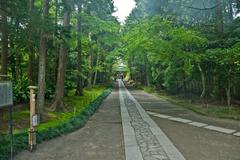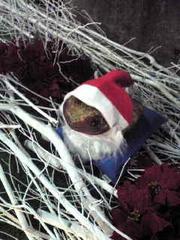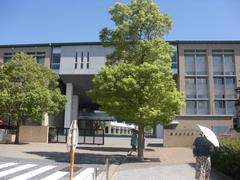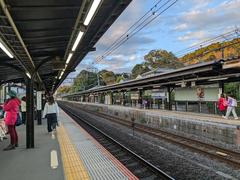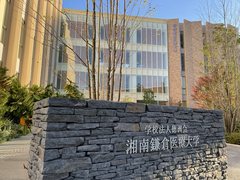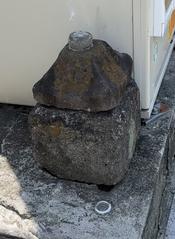Tamanawa Castle Visiting Hours, Tickets, and Kamakura Historical Sites Guide
Date: 04/07/2025
Introduction
Tamanawa Castle (玉縄城, Tamanawa-jō), nestled in Kamakura, Japan, is a significant historical site that embodies the region’s samurai legacy and Sengoku period fortification techniques. Established in 1512 by Hōjō Sōun, the founder of the Later Hōjō clan, Tamanawa Castle was built to control critical routes connecting the Kamakura basin and Miura Peninsula. Unlike the imposing stone castles of later periods, Tamanawa Castle exemplifies the yamajiro (mountain castle) style, making strategic use of natural terrain, earthworks, moats, and wooden defenses.
Although much of the original structure has been lost to time and urban development, the ruins, interpretive signage, and the adjacent Tamanawa History Museum provide visitors with a comprehensive understanding of the castle’s historical and cultural importance. This guide details the site’s history, architectural features, role in regional conflicts, practical visiting information, and recommendations for making the most of your trip to Kamakura’s historical landscape.
For detailed updates and official resources, see the Kamakura City Tourism Page, kamakuraguide.com, ronins-guide.com, and tamanawajo.jp.
Early Foundations and Strategic Importance
Tamanawa Castle’s construction marked a turning point for the Hōjō clan, establishing a stronghold at a vital crossroads in the Kanto region. Its location allowed the Hōjō to monitor and defend against rival clans, including the Uesugi and Satomi, during the tumultuous Sengoku period. The castle’s position was both militarily strategic and symbolic of the Hōjō’s growing power (kamakuraguide.com).
Architectural Features and Defensive Innovations
Designed as a classic yamajiro, Tamanawa Castle utilized steep slopes, multiple baileys, dry moats, and high earthen ramparts. The main bailey, or honmaru, crowned the site’s highest point and was surrounded by a network of terraced enclosures and moats, maximizing the castle’s defensive capabilities. Archaeological surveys continue to reveal details about these military innovations (kamakuramap.com).
Role in Regional Conflicts
Throughout the 16th century, Tamanawa Castle played a vital role in the era’s regional power struggles. It served as a command center and defensive outpost for the Hōjō clan, withstanding sieges and attacks, most notably the 1590 siege by Toyotomi Hideyoshi’s forces. The castle’s eventual surrender marked the end of Hōjō dominance and ushered in a new era under Toyotomi and, later, Tokugawa rule.
Decline, Abandonment, and Cultural Significance
After the Hōjō defeat, the castle briefly served the Tokugawa before it was decommissioned in the early 17th century. Over time, the structure was dismantled and the site reclaimed by nature. Despite this, Tamanawa Castle remains a valuable resource for understanding Sengoku-period defensive architecture and the social order of samurai society (kamakuraguide.com). Local preservation efforts and interpretive signage allow visitors to engage with the site’s layered history (kamakuramap.com).
Visiting Tamanawa Castle: Hours, Tickets & Accessibility
- Castle Ruins Hours: Open daily, 9:00 AM – 5:00 PM; accessible during daylight hours for safety and optimal viewing.
- Museum Hours: Tamanawa Rekishikan (History Museum) is open 9:30 AM – 3:30 PM. Closed on some holidays—verify on the official website.
- Admission: Free for both the castle grounds and museum; donations encouraged to support preservation.
- Accessibility: Terrain is uneven, with earthen paths and slopes. Wheelchair access is limited; visitors with mobility concerns should plan accordingly.
- Best Times to Visit: Spring (cherry blossom season) and autumn (foliage) offer the most scenic experiences.
How to Get There & Nearby Attractions
- By Train: From Kamakura or Ōfuna Station (JR lines), it’s a 15–20 minute walk or a short local bus/taxi ride.
- By Car: Limited parking near Ryūhō-ji Temple; public transport advised due to narrow roads.
- Nearby Attractions: Enhance your visit by exploring the Great Buddha (Kamakura Daibutsu), Tsurugaoka Hachimangu Shrine, Ryūhō-ji Temple, Hasedera Temple, and Komachi Street.
Tamanawa Rekishikan (History Museum) and Ryūhō-ji Temple
The Tamanawa Rekishikan, located within the Ryūhō-ji Temple grounds, displays samurai armor, weaponry, archaeological finds, and dioramas depicting the original castle. The second floor focuses on local folk implements and Edo-period agricultural tools, highlighting daily life in the region (Tamanawa Castle Official, Tabirai Article). Ryūhō-ji Temple itself, founded by a Hōjō lord, offers a serene setting and a spiritual link to the castle’s past.
Events, Community Activities, and Guided Tours
Tamanawa Castle is maintained by local volunteers, with community events such as historical lectures, seasonal festivals, and periodic guided tours. For schedules and event details, refer to the official website.
Visitor Experience and Practical Tips
- Terrain: Wear sturdy shoes; expect slopes and uneven paths.
- Facilities: Restrooms at the museum/temple; no on-site shops.
- Signage: Mainly in Japanese; translation apps recommended.
- Photography: Allowed outdoors and in most museum areas—observe posted restrictions.
- Respect Boundaries: Some earthworks are on private property (school grounds) and are not accessible.
- Etiquette: Maintain quiet within the residential neighborhood and respect local customs.
Frequently Asked Questions (FAQ)
Q: What are Tamanawa Castle’s visiting hours?
A: Ruins are open 9:00 AM – 5:00 PM; museum 9:30 AM – 3:30 PM (check for holiday closures).
Q: Is there an admission fee?
A: No, entry is free.
Q: How do I get there?
A: 15–20 minute walk from Ōfuna Station or accessible via local bus/taxi.
Q: Are guided tours available?
A: Yes, periodic tours and events—see official website.
Q: Is the site wheelchair accessible?
A: Limited accessibility due to uneven terrain.
Q: Can I bring pets?
A: Pets are allowed on a leash; consult local regulations.
Best Times to Visit
- Spring: Cherry blossoms enhance the atmosphere.
- Autumn: Colorful foliage and pleasant weather.
- Winter: Quiet, fewer crowds.
- Summer: Hot and humid with occasional events.
Accessibility for International Visitors
- JR Access: Ōfuna Station is covered by the Japan Rail Pass.
- Luggage: Coin lockers at Ōfuna Station.
- Wi-Fi: Limited on-site; pocket Wi-Fi rental is advisable.
Responsible Tourism
- Take all trash with you and respect private property.
- Support local businesses and preservation efforts.
Visuals and Media Recommendations
- Explore virtual tours and high-quality images on official and local tourism websites.
- Capture photos of earthworks, the museum, and the temple approach for personal keepsakes.
- Use descriptive alt text for online images for accessibility and SEO.
Related Articles and Further Reading
- Tamanawa Castle on Wikipedia
- Wayfarer Daves: Forgotten History in Ōfuna
- Tamanawa Rekishi Kenkyukai (Japanese)
- Japan Guide: Kamakura
- Live Japan: Kamakura Travel Guide
Summary
Tamanawa Castle offers a quietly powerful window into Kamakura’s samurai heritage and Japan’s dynamic Sengoku period. Though its physical remains are modest, the castle’s historical significance, scenic setting, and accessible location make it an enriching destination for history enthusiasts and travelers alike. Community-driven preservation, interpretive resources, and proximity to Kamakura’s major landmarks ensure a meaningful and educational experience.
Stay updated on visiting hours, events, and preservation initiatives by consulting official sites, and enhance your journey by exploring nearby attractions. For travel tips and cultural insights, download the Audiala app and follow us on social media.
References and Further Reading
- Kamakura City Tourism Page
- Kamakura Guide
- Ronins Guide: Kamakura Period
- Just About Japan: Kamakura Period
- Tamanawa Castle Official Website
- Tabirai Article
- Kamakura Map
- Wayfarer Daves: Forgotten History in Ōfuna
- Japan Guide: Kamakura
- Live Japan: Kamakura Travel Guide
